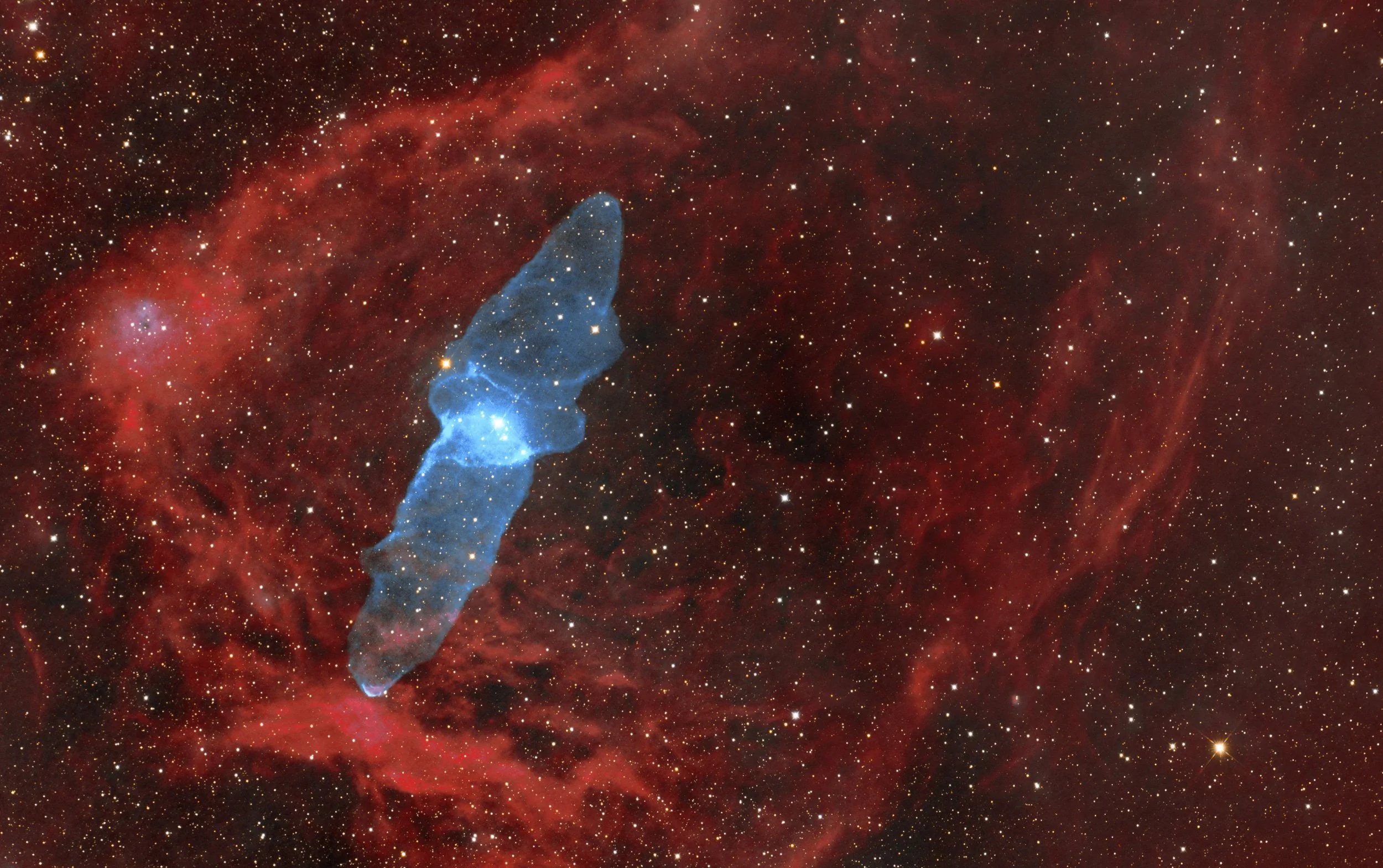
AAPOD2 Image Archives
Squid nebula OU4 - Flying Bat nebula SH2 129 - HOO version
Image Description and Details : Takahashi Espilon 130D RisingCam Mono & Color SkyWatcher EQ6-Pro H : 36 x 600s O: 139 x 600s RVB: 40 x 180s intégration: 31h
Copyright: Thierry BOUFFLET
Sh2-129 / OU4 / Barnard 150
Image Description and Details :
This image has been made from 343 hours of exposure through broadband (LRGB) and narrowband (H-alpha & OIII) filters, composed as an 8-panel mosaic. The result covers an area of approximately 3.50° x 5.10° at 2.09 arc''/pixel resolution. Placed on the surroundings of the constellation Cepheus, this area is rich in several DSOs: We can see Sh2-129, also known as the Flying Bat Nebula, a large and faint HII region showed here in its characteristic H-alpha deep red line.
Superposed to Sh2-129 we see the even fainter Ou4 nebula, colloquially the Giant Squid Nebula, discovered in 2011 by Nicolas Outters, a French amateur astronomer. At first identified as a planetary nebula emitting in the OIII blue-green doublet, it would be in fact the largest in apparent size yet identified, extending over one degree (Acker et al. 2012 - arXiv:1206.2477). However, Corradi et al. (2014 - arXiv:1407.4617) describe Ou4 as the result of a bipolar outflow emanating from a massive component of HR 8119, a triple system located 2,300 light-years away, thus about as far as Sh2-129. If confirmed, this would make it a truly perplexing object.
On the right side of this image appears Barnard 150, or Seahorse Nebula, a dark nebula distant 1,500 light-years, composed by three dense star forming cores, part of an elongated molecular cloud complex. Finally, close to the lower-left end we have identified HD 203025, a Be type star surrounded by a diffuse red nebulosity, captured here through the H-alpha filter. It was catalogued according to its colour and morphology as an IR centred nebula by Bodensteiner et al. (2018 - arXiv:1806.01294), resulting from a massive star member of an interacting binary system.
Technical data:
Telescope: Takahashi FSQ106 ED 530mm f/5
CCDs: QSI683 wsg8
Filters: Baader Planetarium -LRGB Ha OIII
Mount: 10Micron GM1000 HPS
Imaging Software: Voyager
Processing Software: Astropixel, Adobe PS, PixInsight
Imaging Data:
8-panel mosaic captured through July 2021 to December 2021
RGB: 170 x 600” (each). Total 84 hours.
Luminance: 280 x 900”. Total 70 hours.
Ha: 316 x 1200”. Total 106 hours.
OIII: 165 x 1800”. Total 83 hours.
Total Project : 343 hours
Copyright: Remote Observatory "FarLightTeam"
Team: José Esteban, Jesús M. Vargas, Bittor Zabalegui, Marc Valero.
Ou4 - Giant Squid
Image Description and Details:
A nebula, Ou4, that I find very pretty so at the beginning of July, I started to photograph it. It is carried out in hoorvb. until October I got 113 hours of exposure in order to prepare for this image.
OIII 200X900S
HA 260X600S
RVB 240X300S
Copyright Information: Rémi Méré




